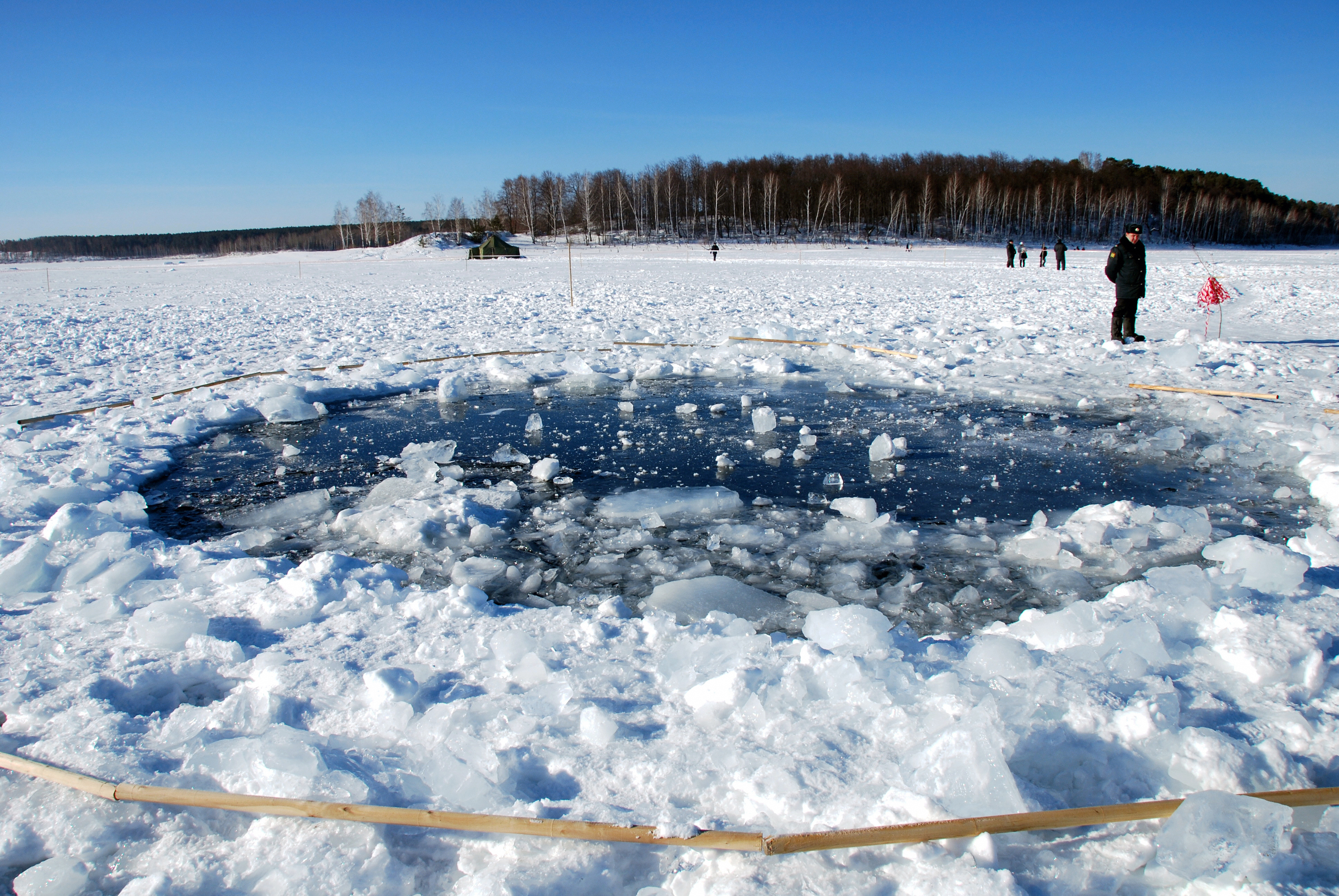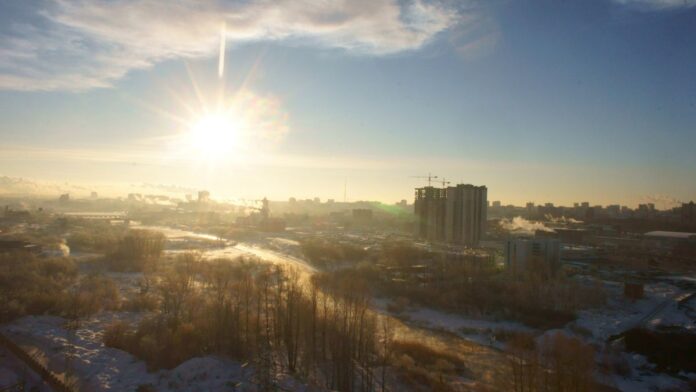On Feb. 15, 2013, Paul Chodas, manager of the Center for Near-Earth Object Studies (CNEOS) at NASA’s Jet Propulsion Laboratory (JPL) in California, was preparing for a NASA TV segment on the flyby of a near-Earth asteroid, 2012 DA14, which was expected to zoom within 17,200 miles (27,680 kilometers) of Earth.
During this prep work, Chodas was sent a YouTube clip of a large fireball exploding in the skies over Chelyabinsk, a city in the Ural region of Russia.
Chodas was skeptical at first. “Initially, there was a lot of confusion. People thinking, ‘Oh, we got our prediction wrong.’ And I assured them no, we knew exactly where that asteroid was, and it was passing through the GEO [geostationary] belt. But this Chelyabinsk asteroid was just an entirely independent event coming from a different direction,” Chodas told Space.com.
As it turned out, the videos Chodas was sent showed a 59-foot (18 meters) near-Earth asteroid exploding in the atmosphere after surprising scientists by coming from the direction of the sun, a blind spot for telescopes and other sensors on the ground. The resulting explosion caused millions of dollars of damage throughout Chelyabinsk and injured thousands of residents across an area hundreds of miles wide. Most injuries were caused by broken glass, although hundreds of Chelyabinsk residents suffered eye damage from the blast that briefly lit up the skies more brightly than the sun. A few dozen reported burns from the intense ultraviolet radiation caused by the blast.
Related: See photos of the Chelyabinsk meteor explosion
Ten years later, the Chelyabinsk meteor explosion and the damage it caused underscore the need for asteroid-tracking telescopes such as NASA’s NEO Surveyor, planetary defense missions such as the Double Asteroid Redirection Test, and research organizations like the CNEOS (opens in new tab). While there are currently no known asteroids that are on a collision course with Earth, unexpected objects routinely crash into the atmosphere with only a few hours notice. And in the case of Chelyabinsk, sometimes asteroids can arrive undetected through blind spots in our detection capabilities.
Nevertheless, there is no need to lose sleep because of the asteroid threat. “There are no known large asteroids which have any significant chance of hitting the Earth,” Chodas assured us.
After the Chelyabinsk meteor exploded, infrasound sensors designed to detect nuclear detonations helped scientists determine that the blast was indeed incredibly powerful. “This was a big event, the largest one we’ve ever actually measured,” Chodas said. “On our fireballs page, which measures all the major impact events, this was by far the largest. So that was just an amazing experience, I have to say.”
Initially, the explosion was estimated to be between 300 and 400 kilotons, but more recent estimates put the size at 500 kilotons. By comparison, the Fat Man nuclear warhead dropped on the Japanese city of Nagasaki during World War II had a yield of 21 kilotons.
Chodas added that it’s fortunate that the event was initially recognized for what it was and not misconstrued as some sort of military event. Chelyabinsk Oblast, the administrative region of which the city of Chelyabinsk is the seat, is home to the All-Russian Institute of Technical Physics (opens in new tab), one of two facilities in Russia that manufacture nuclear weapons.
“But of course, it was way bigger than you would expect from any sort of attack on the city. So I think I’m happy that that was the initial reaction, and that the correct initial reaction was that it was a natural event,” Chodas said.
Read more: Russia meteor blast is biggest in 100 years
While Chelyabinsk was indeed a natural event, the sheer size of the meteor makes it stand out among the many smaller impacts that occur routinely in the atmosphere. While smaller meteor impacts and fireballs are somewhat common, impacts such as Chelyabinsk or the Tunguska event 100 years prior are far rarer due to the fact that larger objects are exponentially less common throughout the solar system than smaller ones.
“It all depends on what size you’re talking about,” Chodas said. “I mean, small objects hit us every day. You can go out and see meteor showers, and those are little pebble-sized objects, which are extremely numerous. That’s why those impacts are common. And that’s a hard thing to understand. As you go up to larger and larger sizes, the impacts become less and less frequent. And that’s an exponential drop off, by the way. So that’s important to understand.”

Chodas added that, despite the frequent headlines that sensationalize any “close” pass by an asteroid, the distances that fall under the definition of near-Earth can be misleading. For example, an asteroid called 2005 YY128 will pass by Earth on Feb. 15 at a distance of 2.8 million miles (4.5 million km), an encounter that has generated a fair amount of media buzz but presents no danger to us at all.
“That’s only astronomically close,” Chodas said. “So the important thing, hopefully, for the public to understand is that a lot of these close approaches are quite distant. And we know the trajectories very precisely.” Chodas added that 2005 YY128 has been tracked by CNEOS for 17 years and its orbit has been accurately predicted to within 100 miles (160 km). “So there’s just no chance that it could pose a hazard,” Chodas added.
Read more: Russia meteor blast was largest detected by nuclear monitoring system
One reason for these constant headlines is the fact that NASA and other space agencies are detecting asteroids and other space rocks at a much more frequent pace thanks to several initiatives the agency has undertaken in recent years.
The asteroid “discovery rate has dramatically increased,” Chodas said.
Projects like NASA’s upcoming NEO Surveyor asteroid-hunting telescope will help identify and track these objects with greater sensitivity than before. Using infrared sensors, the space telescope will be able to search for multiple near-Earth objects at once. “I like to make the analogy that searching for asteroids is like fishing in the ocean,” Chodas said. “And really, if you want to catch more fish, you need a bigger net.”
Current NEO detection and tracking capabilities aren’t quite sensitive enough to spot distant objects, but NEO Surveyor should help remedy that, enabling NASA to detect and catalog asteroids at much farther distances than current technologies enable. “And that’s a really important goal, because our biggest, strongest defense against an asteroid impact is to discover the asteroid early. And to do that, you need a next-generation capability,” Chodas explained.
NEO Surveyor is scheduled to launch in June 2028. For more information on near-Earth objects and efforts to study and catalog them, visit the CNEOS website (opens in new tab).
Follow Brett on Twitter at @bretttingley (opens in new tab). Follow us @Spacedotcom (opens in new tab), or on Facebook (opens in new tab) and Instagram (opens in new tab).

